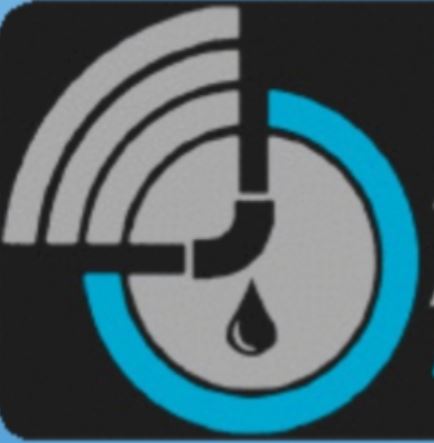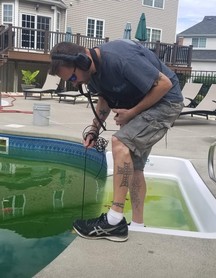- Home
- Pool Leak Repair
- Pool Pressure Testing
- Pool Leak Detection
- About Us
- Contact
Navigation- Home
- Pool Leak Repair
- » Main Drain Testing
- » Hotel Main Drains
- » Emergency Main Drain Repair
- » Additional Services
- » Vinyl Pool Liners
- » Pool Covers
- » Pool Repair Diver
- » The Leakalyzer - Leak or Evaporation Test
- » Pool Skimmer Problems
- » Termite Leak Repair
- » Pool Leak Detection
- » Underwater Services
- Pool Pressure Testing
- » Pipe Leak Detection - Underground
- » Skimmer Repair
- Pool Leak Detection
- About Us
- » Training and Support
- » » Leak Detection Training
- » » Leak Phone Support
- » FAQ
- » Testimonials
- » Checklist Before We Come
- » Service Areas
- » Privacy Policy
- » Leak Videos
- » » Leak Articles
- » » » Swimming Pool Leak Detection
- » » » Do leak companies fix leaks
- » » » Pool Leaks - home owners save money
- » » » Pool Water Evaporation
- » » » Pool Dye Testing
- » » » Narrow down a pool leak
- » » » Pool Structure Leaks
- » » » Pool Leak Indicator Level
- » » » Water Loss Speed
- » » » Pool Plumbing Leaks
- » » » Why Pools Leak
- » Terms & Conditions
- Contact
- » Email - Phone
Call Us 732-705-7344
NJ LICENSED & FULLY INSURED
FAQ
FAQ Pool Leak Repair
Your pool will naturally lose some water to evaporation, some will splash-out.. You may also gain water from rainfall. My rule of thumb is that if you're routinely adding more than two inches of water to your pool per week, you may have a leak. It is worth spending some time and money to repair. Pools are meant to be watertight but sealants will deteriorate while other parts of your pool shift and settle or just plain wear out.
Pools can leak through any of the fittings or accessories, plumbing, or even right through the shell. It is important to repair leaks, not only to save water, heat, and chemicals, but also to prevent undermining pool structural components and washing away fill dirt. Leak detection is a highly specialized branch of the industry. Ninety five percent of all phone calls I get from worried pool owners about a leak turn out to be inexpensive to repair. So relax, if you can't take care of the problem yourself a professional will be equipped to do so for you. If you suspect a leak, review the following things before calling for service.
How much do you charge to locate a pool liner leak?
We have very competitive rates for residential pool liner leak detection. Prices can be seen bellow :
Leak Detection of a Vinyl Liner, Fiberglass, or other type of shelled pool
- Please click here for our updated price list
- Coupons can be found here
How much do you charge to fix a leak after is is located?
We have very competitive rates for residential underwater pool leak repair.
Underwater pool leak repair can change per job depending on a lot of different reasons. We Will Not repair anything unless we speak personally with the customer giving you a full quote after the leak detection test has been completed.
"Most" underwater leak repairs with a vinyl liner "averages" around $75 - $200 depending on the size, location, water temperature, how long it takes to repair ect.
( please remember this price does not include the pool leak detection service )
- If you choose not to have us do the repair, then we will be more then happy to mark the area for you, so you may attempt to do the repair yourself at no additional cost.
What is our Guarantee ?
What is our Warranty ?
WE WARRANTY ALL OF OUR LEAK REPAIRS FOR 30 DAYS! IF A REPAIR FAILS, WE WILL COME BACK AND FIX IT AT NO CHARGE!
Is the pool leaking only with the equipment on?
This may indicate a pressure-side return leak. With the filter pump on, the plumbing on the pressure side is under pressure. This can open up small drips into spraying gushers. Check the waste or backwash line for water consistently running. One inch of your pool water can equal 500 gallons.
Is the pool leaking only with the equipment off?
This usually indicates a suction-side leak. With the filter pump on, the plumbing on the suction side is under vacuum. Air can be drawn in through otherwise leaking voids. You may notice air in the pump basket (if you have a clear lid), air bubbling out of the return lines, or air repeatedly built up inside the filter tank. Use tape or a pencil to mark water levels. Is the pump basket lid on tight with a good, lubed o-ring?
Does the pool leak all the time?
This does not rule out leaks in the plumbing, but turns a suspicious eye on the shell of the pool, looking for cracks in the plaster or tears in the vinyl. Look closely at the tile line and look real closely inside of the skimmer(s). The most common leak we fix is a separation between the plastic skimmer and the concrete pool. This is easily fixed with some pool putty. If you see something that looks like a crack, drop some of your pH indicator test reagent near it with your pump shut off and water still. See if the dye is sucked into the crack under water lights can and do leak as well. Especially the conduit that runs from the light niche to the junction box. Filling the opening of the conduit in the back of the light niche with putty, silicone, or caulk is a way to fix this problem.
Does the water seem to stabilize at any particular level?
You may be able to close the skimmer valve and allow the water level to drop below the skimmer. If it keeps going, we can rule out the skimmer (although there can always be more than one leak). The underwater light is a common leak source. If the water stabilizes, dye test around this level very carefully. Look for small debris which may have been sucked into the crack or void. This is a good indication of a leak.
Is your pool equipped with a vinyl liner?
If so, there are special considerations. Look for sinkholes where sand under the liner may have washed away. Look for tears or separations around all fittings: skimmer, returns, cleaner line, etc. Pay close attention to steps and corners, where the liner may be stretched more than normal. If an animal had the misfortune to fall into your pool you may notice claw marks (tears) just below the water line. Spending time under water with a mask may be required to find a small leak in the liner. When liners become old they may have many pinhole leaks. There can always be more than one leak.
Unsure of your evaporation rate?
Place a bucket of water beside the pool and mark both the water in the bucket and the pool water level. Wait 24 hours then check the loss of both. If the pool loses more water than the bucket, then you have a leak.
Monmouth County Service Areas
Aberdeen Asbury Park Atlantic Highlands Avon-by-the-Sea Belmar Bradley Beach Brielle Colts Neck Eatontown Fair Haven Freehold Borough Freehold Township Hazlet Highlands Holmdel Howell Keansburg Keyport Little Silver Long Branch Manalapan Manasquan Marlboro Matawan Middletown Millstone Monmouth Beach Neptune Neptune City Ocean Oceanport Red Bank Rumson Shrewsbury Spring Lake Spring Lake Heights Tinton Falls Union Beach Upper Freehold Wall West Long Branch
Middlesex County Service Areas
AT THE PRESENT TIME WE DO OFFER SERVICES TO:
Carteret Cranbury Dunellen East Brunswick Edison Helmetta Highland Park Jamesburg Metuchen Middlesex Milltown Monroe New Brunswick North Brunswick Old Bridge Perth Amboy Piscataway Plainsboro Sayreville South Amboy South Brunswick South Plainfield South River Spotswood Woodbridge
Ocean County Pool Service Areas
WE OFFER SERVICES TO THE FOLLOWING AREAS ONLY:
Bay Head, Brick, Lavallette, Mantoloking, Point Pleasant, Seaside Heights, Toms River
AT THE CURRENT TIME WE DO OFFER SERVICES TO:
Barnegat Beach Haven Beachwood Berkeley Eagleswood Harvey Cedars Island Heights Jackson Lacey Lakehurst Lakewood Little Egg Harbor Long Beach Manchester Mantoloking Ocean Gate Ocean Pine Beach Plumsted Ship Bottom South Surf City Stafford Toms River Tuckerton
Pool Leak Detection in
Monmouth, Ocean And Middlesex Counties NJ
NJ POOL PATCHER
NJ Pool Patcher, LLC
29 Roberts Drive
Neptune City, NJ 07753
732-705-7344
Sales@PoolPatcher.com


